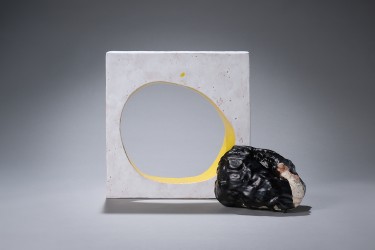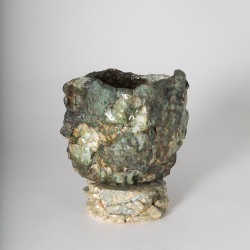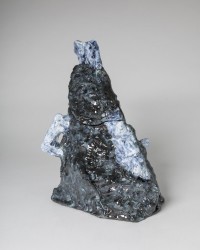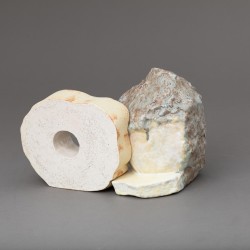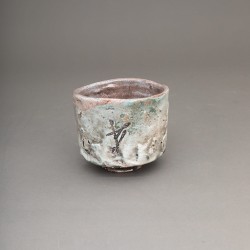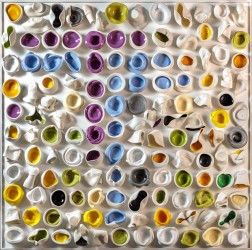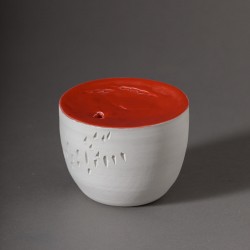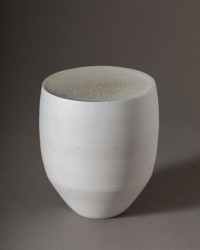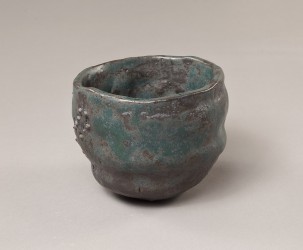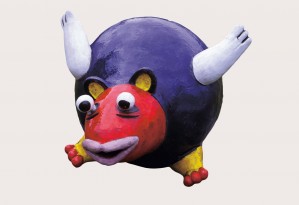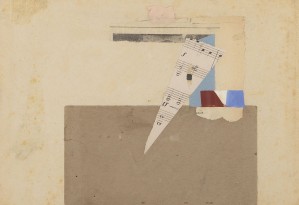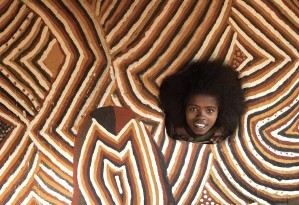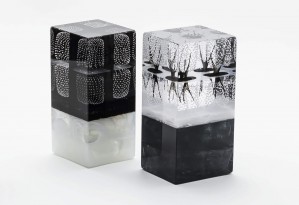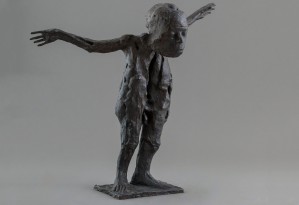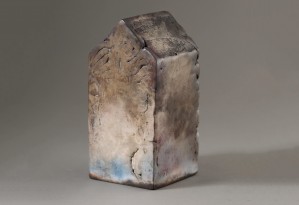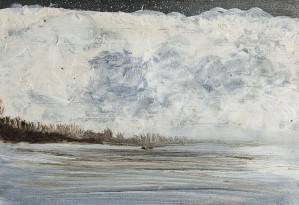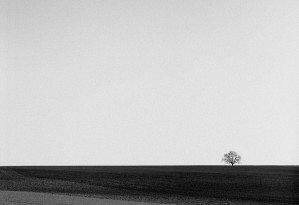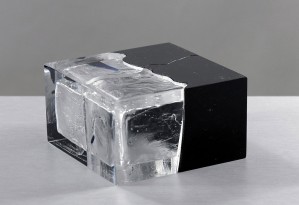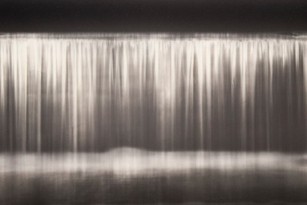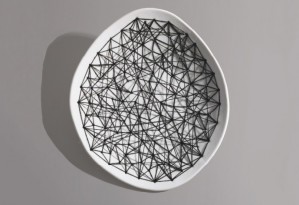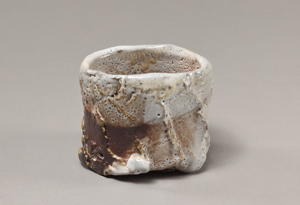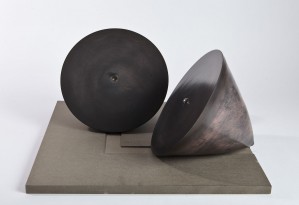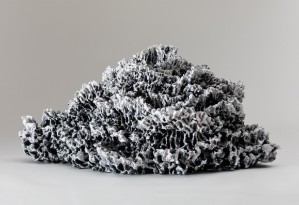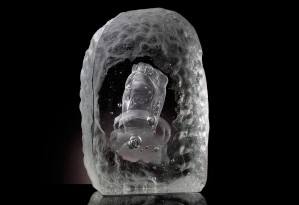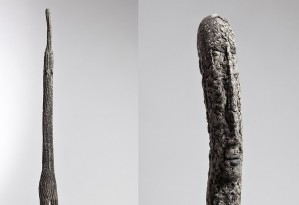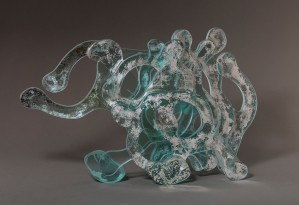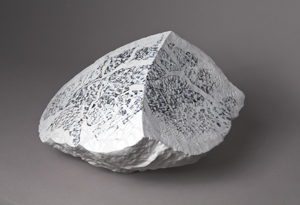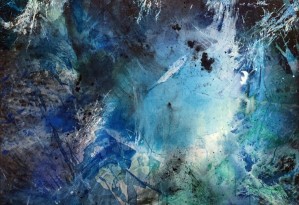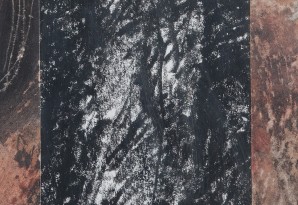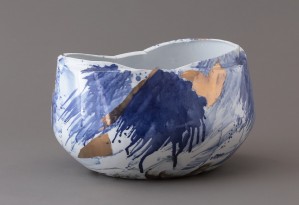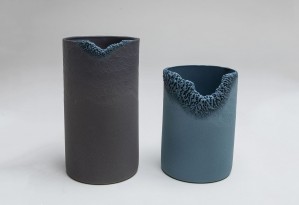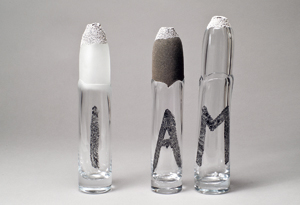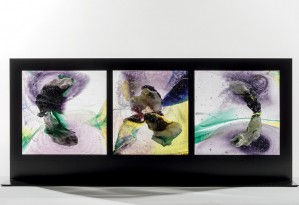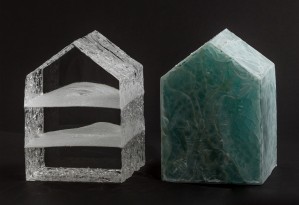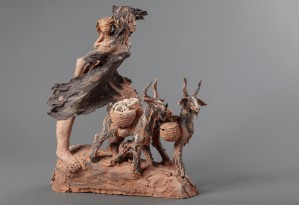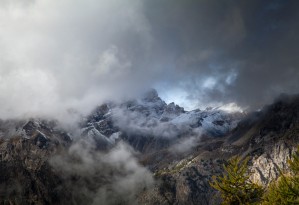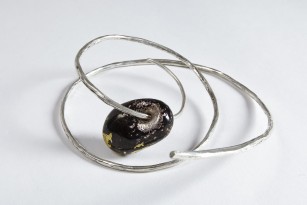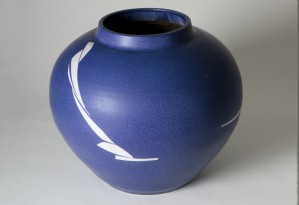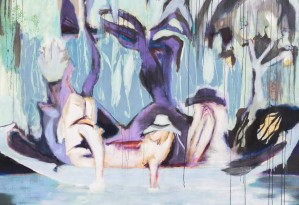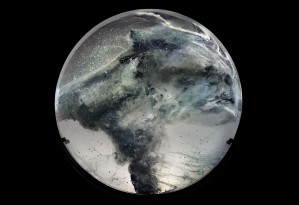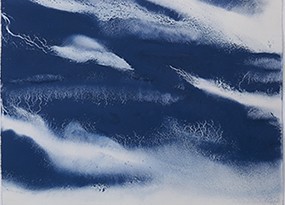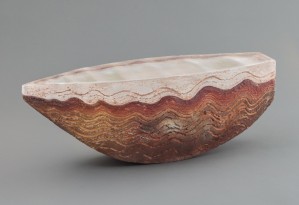VIOT Jean-Pierre, terracotta sculpture, permanent artist of Galerie Capazza since 1987
« The snail moves in an uninterrupted creation of its own body, reinvents and meets itself. It slides with ease into the endless tunnel of its own identity. It is thought to be rather slow but does not see that its future image precedes it and that the road it takes is within it”. This text of Alexandre Toursky contains the present, the past, the future. In this apparent slowness, as in life, things happen step by step. It is because of what goes before that what happens next comes about. I can truly relate to this image. A regular slowness that makes progress. We have creation within ourselves but it’s not always easy to reveal it to the world.”
Jean Pierre Viot
To evoke for a retrospective, the ceramic works of Jean Pierre Viot, is it to run the risk of incompleteness. As much as to assume it quickly and deliberately, to make choices and preferences by favoring, in a field which is exceptionally rich and diverse, a few itineraries which are special sources of pleasure. On my part, and without any justification other than my own personal inclinations and a long-term friendship, I retain both anthems.
The eye, at first, follows an imposing set of unturned containers, some single units, others carefully combining several fragments as one when the oven and the cooker requires it of them. In the diversity of their sizes, shapes and colored nuances borrowed from natural clay pigments as enameled reflections with dominant whites which cover them with irregular streaks, two constants always manifest themselves: mastery of an art and the modeling of a space.
Here, each piece is homage to ceramics: a celebration of the fundamental material and of creative acts, in a tension between the earth which reluctantly offered itself and the hand which kneaded, mixed, fashioned and modeled it. Thus was created in the same movement, in a unique and new way, traces of the work from which it came (impressions, grooves, rolls, striations…) and the far-off echo of archetypical shapes always revisited, transformed, inverted and turned around (urns, pots, vases, jars and bowls…).
Bearers of their own genesis and history, these works would not know how to define themselves exclusive of a dialog with the space that they occupy each in its own way, but always in the dynamism which confers upon them a subtle set of curves, inclinations and sloping lines. In isolation, they draw their strength from the earth itself on which they are now resting “naked”, without the aid of a pedestal in order to “take the earth by its bowels”, in the words of Valéry. Brought near, they manage a void which, in their midst, becomes an integral part of the groups presented, where each component, solid or hollow, is enriched by its relation with the others in order to form a landscape where materials, shapes, surfaces and nuances speak with to another.
These plastic qualities are found in the second of these journeys, that which the porcelain pieces post out. In 1998, at the initiative of the EKWC (European Keramic Word Center), Jean Pierre Viot was a guest artist at s’Herogenbosh (Netherlands) for three months. In homage to the country that welcomed him, he created there, among other things, a “parterre” of 470 “tulips”. Parterre, here, takes its full meaning: location and material at the same time. Using the earth, 470 pieces of clay, 470 smalls cups, some made of sandstone, but most of white porcelain, enriches their colors (they are partially covered with bright enamel) and their shapes (closed, semi-open or torn). They are powerfully in bloom, as thought lifted by an unseen energy, though obviously outside of all actual supports.
Since then, the artist has continued his work with the new pieces. If the porcelain “tulips” have preserved their rounded forms, their dimensions were magnified without losing, to any degree, the perfect balance between elegance of the shapes and the postures that they take the fragility of their nuances (white cameos) and the refinement of the material. More than ever, to the credit of the flower which was dear to Mallarmé, the tulips by Jean Pierre Viot evoke, for our greater pleasure, “something other than the calyces that meet the eye”.
Biography
Jean-Pierre Viot, born 30 april 1936 in Rouen (Seine-Maritime, France).
Graduated from Fine Arts Academy of Rouen.
Since 1999, he has set up in Guermantes (Seine-et-Marne), in a studio-house that he built himself with his wife, Haguiko.
Founder Member of the Centre d’art contemporain de Châteauroux (the CRAC), he organized, together with the city of Châteauroux, and curated the Biennale of Contemporary Ceramics from 1979 to 2003.
Founder member
Centre d’Art Contemporain de CHATEAUROUX (CRAC)
Comité d’Organisation du Symposium de LA BORNE en 1977
Association “Art Objet” - PARIS
Selected exhibitions
2021 Enfances, collective exhibition, Galerie Capazza, Nançay
2020 Le torse d’une femme à la pureté d’un vase, grandes courbes simples d’un fruit désiré, Parcours d’art contemporain autour d’Auguste Rodin, 1 exhibition, 5 places, collective exhibition, Galerie Capazza, Nançay
2019 L’Arbre c’est le temps rendu visible, collective exhibition, Galerie Capazza, Nançay
2018 Miroir des Sentiments, collective exhibition, Galerie Capazza, Nançay
2017 19th International Ceramic Biennial, Châteauroux
Exhibition of the ceramists Jean-Pierre Viot and Haguiko, Fondation Espace écureil, Toulouse
Il est grand temps de rallumer les étoiles, collective exhibition, Galerie Capazza, Nançay
2016 Personal exhibition, Malicorne Espace Faïence
Vénus et Vulcain, collective exhibition, Galerie Capazza, Nançay
Exhibition of the ceramists Jean-Pierre Viot and Haguiko, Fondation Espace écureil, Toulouse
2015 International Ceramic Center, La Borne, France
2012 Abbaye d’Arthous, Hastingues, France
2011 Galerie Capazza, Nançay, France
2008 “Hello ici la terre” 50 ans de création. Rétrospective aux Cordeliers, Châteauroux, France
2007 “D’un côté, l’autre”, Espace d’Art Contemporain Les Roches, Le Chambon sur Lignon,
France
Ecole d’Art du Beauvaisis, Espace Culturel François Mitterrand, Beauvais, France
Chez Micky Mallet, La Borne, France
2006 “Le blanc, ou presque...” Eglise Saint-Cyran. Le Blanc, France
Galerie Hélène Porée, Paris, France
2005 Galerie Yamaki, Osaka, Japan
2004 Galerie B15, Munich, Germany
Galerie Loes et Reiner International Ceramics, Deventer, Netherlands
2002 Espace Croix- Baragnon, Toulouse, France
Galerie DM Sarver, Paris, France
2000 OPAC de Reims, France
Sawara Museum Ruhe. Fukuoka, Japan
Galerie Maronie. Kyoto, Japan
1999 Espace Saint-Jean, Melun, France
“Cultures d’Automne”, Carré Noir- Le Safran, Amiens, France
1997 Galerie HD Nick, Aubais, France
Galerie Loes et Reiner International Ceramics, Deventer, Netherlands
1996 Maison de la céramique, Mulhouse, France
Galerie le Vieux -Bourg, Lonay, Switzerland
1995 Galerie DM Sarver, Paris, France
1994 Galerie B15, Munich, Germany
1993 Musée de Saintes, France
1987 Galerie Capazza. Nançay, France
1986 Galerie DM Sarver, Paris, France
1983 Galerie Heidi Schneider, Horgen, Switzerland
Galerie Arcadie. Lyon, France
Public collections
F.R.A.C. Limousin, France
F.R.A.C. Alsace, France
F.R.A.C. Basse Normandie, France
Musée National de la Céramique de Sèvres, France
Musée de Louvain la Neuve, Belgium
Ville de Saint-Nazaire, France
Musée de Saintes, France
Musée d’Art Moderne de Taipei, Taïwan
Ville de Melun, France
OPAC de Reims, France
Ville de Le Blanc
Musée français de céramique contemporaine du Flicam à Fuping -Shaanxi, China
Collection Ateliers d’Art de France, Paris, France
Musée Bertrand, Châteauroux, France
Private collections in Belgium, Germany, Switzerland, Japan, Nederlands, France, Tunisia, Australia, China, Canada.
Public and private orders
1969 Centre Commercial Suma, Châteauroux - Mur en grès de : h 2,40 x 10 m
1970 Centre social de Le Blanc. Mural en porcelaine de 4 m x 0,80 m h.
Coopérative des agriculteurs, Châteauroux. Mural en grès de 12 m x 2,20 m h.
1971 Banque Populaire, Niort. Mur en grès et faïence h 3 x 15 m
1972 Salle des sports de Belle-Ile à Châteauroux. Mur en grès de 12 m x 0,80 m h.
1975 C.E.S de Déols. Fontaine en grès de 8 m x 0,80 x 3 m h.
Caisse Régionale de Crédit Agricole de Châteauroux. Mur-fontaine en grès de 60 m x 1,40m (hauteur moyenne)
Caisse Régionale de Crédit Agricole de Châteauroux. Mur en faïence et grès: h 2 x 7 m
1976 Groupe scolaire Bel Air à Issoudun. Cinq panneaux de 1,80 m x 1,20 m chacun.
C.E.G. de Saint Benoit du Sault. Mural en faïence, diamètre : 1,60 m.
C.E.G. d’Eguzon. Sol en grès du théâtre de verdure, diamètre : 4,60 m.
Bureau des petites annonces du Figaro à Paris. Mur-sculpture en grès de 5 x 3 m h
1977 Groupe scolaire du Grand Poirier à Châteauroux. Signal en grès de 0,50 m x 0,50 x 3m h
C.E.G. de Chabris. Composition pour un sol de 300 m2
Hôtel de Ville de Châteauroux. Fontaine murale en grès de 1,80 m x 3,60 m h.
Maison du Bâtiment de la Touraine à Tours. Fontaine extérieure en grès de 5 m x 0,50 m x 2,60 m h.
Roseraie des Arènes à Poitiers. Fontaine en grès de 0,80 x 0,60 x 3 m h.
1978 Ecole maternelle St Eloi de Poitiers. Fontaine en grès de 0,80 m x 1,10 x 1, 50 m
C.E.G. de Vatan. Fontaine murale en grès de 9 m x 2,60 m h.
Crédit Agricole de Niort. Deux murs en faïence et miroirs : h 3,50 x 8 m chacun
1979 Groupe scolaire de Celle sur Belle. Mural en faïence, diam : 1,60 m
1981 Théâtre auditorium de Maisons Alfort. Six murs en grès émaillé de 1,50m x 6m h. chacun. Fronton en béton blanc sablé 40 m x 2 m h.
Collège de Tournon Saint Martin. Quatre murs en grès émaillé de 0,65m ; 0,75 ; 1,50 ; 2,20 x 2,60 m h
Siège social Labinal Saint Quentin en Yvelines. Fontaine intérieur-extérieur 6 x 1,50 x 3 m h et deux murs en façade de 5 x 6m chacun, le tout en grès émaillé.
1982 Télédiffusion de France à Bercenay en Othe. Mur en céramique et miroirs de 14 m x 3 m h. Œuvre commune avec Haguiko
Centre Culturel d’Issoudun. Mur en grès de 2 m x 2,50 m h.
Ecole Nationale du Bois à Nogent sur Vernisson. Aménagement d’un patio intérieur avec 75 modules en béton blanc sablé et colorés.
Création d’un sol avec du carrelage industriel, superficie : 400 m2.
Hôtel des Postes de Champagnole. Partie basse des guichets en grès émaillé.
198
Bibliothèque Centrale de Prêts de Limoges. Portiques et colonnes en béton de 3,50m x 3,50m h.
Aménagement de la totalité de la place de la ZAC du centre -ville de Maisons-Alfort, composition au sol sur 4800 m2, création de sculptures et mobilier urbain en collaboration avec Haguiko
1985 École maternelle Vaugirard, Châteauroux. Mur peint de 2,70 m x 2,50 m h.
1986 Immeuble Roger Brac à Châteauroux. Mur peint, carrelages récupérés, 2,50 m x 12 m
1987 Groupe scolaire de Cosnac. Mur et plafond en céramique et peinture. Salle polyvalente de Saulieu. Sculpture en céramique 1,40 x 3 m.
1990 Hôtel des Impôts de Villefranche de Rouergue. Fontaine et murs en béton blanc sablé et céramique, trois éléments de 3,50 m x 3 x 2,50 m h.
Commissariat de Police de Massy. Aménagement du patio extérieur et réalisation de deux murs en grès émaillé de 8 m x 4,60 m h.
1991 Lycée de la Vallée du Cailly à Déville. Mur en raku de 3 m x 4 m h. (projet de Michel Henri VIOT).
I.U.T. de TOURS, département du Génie Électrique, quatre éléments en béton poli et raku de 0,25 m x 2,50 x 1,80 m h - 0 25 m x2 50 x1,65 m h - 0,25 x 2,50 x 1m h et 0,25 m x 0,70 x 1 m h. (Œuvre commune avec Haguiko).
1996 Lycée technique Le Corbusier à Saint Etienne du Rouvray. Quatre murs en raku de 2 m x 2 m h. (projet de M.H.Viot).
D.D.E. de la Haute Garonne à Toulouse. Etude et conception d’un giratoire et de son environnement à Fenouillet.
Réalisation d’une fontaine monumentale en béton blanc sablé et céramique : deux éléments de 13 m x 4,50 m h.
1998 Lycée technique Le Corbusier à Saint Etienne du Rouvray. trois murs en céramique de 2 m x 2 m h . (projet de M.H.Viot).
Parc public de Minakasédai à Maebaru-Fukuoka (Japon).
“Le passage du temps” Aménagement d’un espace et réalisation de sculptures monumentales en céramique.
Dimensions comprises entre 0,50 m x 0,50 x 1,20 m h et 3,50 m x 3 mh. (œuvre commune avec Haguiko).
IGUIMI Building Mural en raku h 2,40 x 4 m (en collaboration avec Haguiko)
1999 Crèche de Morsang sur Orge. Deux murs en faïence de 0,85 x 0,85 m. (en collaboration avec Haguiko)
2000 Parc de loisirs de Montchanin. “Retour à la terre”. Trois sculptures en fonte, briques, et céramique. Dimensions comprises entre 1,90 m et 2,50 m x 0,70 m et 1,60 m h chacune. (en collaboration avec Haguiko).
2001 Quartier des Malassis à Bagnolet, étude et réalisation en grès émaillé pour le compte de l’OPAC de Paris d’une sculpture composée de différents éléments installés au sol et sur plusieurs murets le tout sur environ 30 mètres. Architecte de l’opération : Edith Girard.
2004 Ville de La Roche sur Yon. Sculpture commémorative pour le Bicentenaire de la Ville. Deux cents plaques de lave émaillée, grès, verre, inox, fibre optique. Dimensions : 3,60 m x 1,20 m x 3,40 m h. Projet soumis à concours. Cuisson des éléments de grès chez Hervé Rousseau à Henrichemont
2005 Ville des Mureaux. Maison de la Petite Enfance. Trois panneaux de 2, 45 cm x 0,60 cm, acrylique sur aluminium. Signalétique générale.
2010 Circuits céramique, Sèvres-Cité de la céramique, Exposition de l'AIC et "La scène française contemporaine"
"Exhibition Without Passport", Kurogawa Inn Museum, Kyosei-No-Sato (Japon)
"Craft-Trend Fair", avec ateliers d'Art de France, Séoul (Corée)
Musée Adrien Dubouché à Limoges. Sculpture “une suite”
600 “bols” en porcelaine émaillée, deux “nuages” en grès émaillé, béton blanc. Dimensions : 1,80 x 2,50 x 3,50 m h. Œuvre commune avec Haguiko.
2011 "Mise en œuvre", Le quotidien et l'exceptionnel sous l'œil du design, Sèvres-Cité de la céramique.
